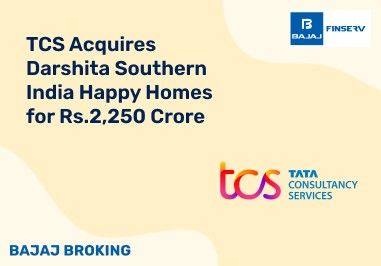Filing the correct Income Tax Return (ITR) is essential for individuals, businesses, and organizations to report their income, claim deductions, and comply with tax regulations. For FY 2024-25 (AY 2025-26), the Income Tax Department has categorized taxpayers based on income type, source, and financial transactions, assigning specific ITR forms accordingly. Whether salaried individuals, business owners, or firms, each taxpayer must determine the appropriate form—ranging from ITR-1 for basic salaried earners to ITR-7 for trusts and non-profits.
Understanding types of ITR forms and other classifications helps ensure accurate filing, timely refunds, and avoidance of penalties. Selecting the right ITR form simplifies tax compliance and financial management.
What is ITR?
Income Tax Return (ITR) is a document submitted to the tax authorities, detailing a taxpayer’s earnings and the corresponding tax obligations. The Income Tax Department has introduced seven distinct ITR forms, each designed for different taxpayer categories. The selection of the appropriate ITR form depends on factors such as income type, total earnings, and whether the filer is an individual, Hindu Undivided Family (HUF), or a company.
Taxpayers must ensure timely filing of their ITR before the prescribed deadline to comply with tax regulations. Filing the correct ITR form ensures proper tax computation, prevents legal penalties, and facilitates financial transparency.
What are Income Tax Returns in India?
Income Tax Returns (ITR) in India are official forms which detail earnings, tax liabilities, deductions, and exemptions for a given financial year. Every taxpayer, including salaried professionals, self-employed individuals, and corporate entities, must file their ITR within the stipulated deadline to comply with tax laws. Filing an ITR is not only a legal obligation but also a prerequisite for availing tax refunds and claiming various financial benefits.
The Central Board of Direct Taxes (CBDT) has prescribed different ITR forms based on income sources, taxpayer category, and financial activities. For instance, ITR-1 applies to salaried individuals with simple income structures, while ITR-3 is designated for business owners and professionals. The ITR filing process allows taxpayers to disclose earnings from multiple sources, including salary, house property, capital gains, and other investments. By filing the correct ITR form, taxpayers can claim deductions under various sections of the Income Tax Act, reducing their tax liability.
Apart from tax compliance, filing ITR is beneficial for securing loans, applying for visas, and maintaining a transparent financial record. It serves as proof of income, helping individuals and businesses establish credibility in financial transactions.
Why Should You File ITR?
Filing an Income Tax Return (ITR) is essential for multiple financial and legal reasons. It ensures compliance with tax regulations and provides various benefits. Key reasons to file ITR include:
Claiming Tax Refunds – If excess tax has been deducted at source, filing ITR allows you to request a refund from the Income Tax Department.
Reporting Foreign Assets and Income – If you have earnings from foreign sources or own overseas assets, it is mandatory to declare them in your ITR.
Visa and Loan Applications – Financial institutions and embassies often require ITR proof when processing loans or visas, making it a crucial document for such applications.
Mandatory for Companies and Firms – Regardless of whether a business entity has incurred a profit or loss, firms and companies are obligated to file ITR annually.
Carrying Forward Losses – Losses under business, profession, or capital gains cannot be carried forward to offset future income unless the ITR is filed before the specified deadline.
Filing ITR is not just a legal formality but also a strategic financial decision that facilitates refunds, maintains financial records, and ensures compliance with tax laws.
Who Should File Income Tax Returns?
Filing an Income Tax Return (ITR) is mandatory for certain individuals and entities based on their income and financial activities. Choosing the correct ITR Forms is crucial to ensure compliance with tax laws. Below are the key conditions requiring taxpayers to file ITR:
Income Above Exemption Limit – Individuals must file if their income surpasses the basic exemption threshold, which varies based on tax regime and age.
Significant Financial Transactions – Taxpayers must file if they deposit over ₹1 crore in a current account, spend ₹2 lakh or more on foreign travel, or have electricity bills exceeding ₹1 lakh.
TDS/TCS Deduction Beyond Limits – If tax deducted at source (TDS) or tax collected at source (TCS) is more than ₹25,000 (₹50,000 for senior citizens), an ITR filing is necessary.
Business and Professional Earnings – Those with business turnover exceeding ₹60 lakh or professional income above ₹10 lakh must submit the appropriate types of ITR forms.
Foreign Income or Assets – Individuals with global earnings or foreign assets need to file ITR.
Loss Carry-Forward – To offset or carry forward business or capital losses, timely ITR filing is required.
Types of ITR
The types of ITR forms available to Indian taxpayers are structured to accommodate individuals, Hindu Undivided Families (HUFs), businesses, and other entities based on income levels and sources. The selection of the appropriate ITR forms depends on factors such as salary, business earnings, foreign assets, and specific tax regulations. Below is a breakdown of the types of ITR forms & eligibility criteria:
1. ITR-1 (Sahaj)
Applicable to individuals with:
Salary or pension income
Total earnings up to ₹50 lakh
Additional income from sources (excluding lottery or horse racing)
Agricultural income below ₹5,000
Income from a single-house property (with exclusions)
2. ITR-2
For individuals and HUFs with:
Income exceeding ₹50 lakh
Earnings from salary, pension, capital gains, and other non-business sources
Foreign asset holdings
Agricultural income above ₹5,000
3. ITR-3
Designed for individuals and HUFs involved in:
Business or professional earnings
Partnership firm income
Salary, pension, capital gains, and other sources
Unlisted equity share investments
Directorship in a company
4. ITR-4 (Sugam)
For individuals, HUFs, and firms (excluding LLPs) with:
Business or professional income up to ₹50 lakh
Tax returns filed under the presumptive income scheme (Sections 44AD, 44ADA, 44AE)
5. ITR-5
Meant for entities such as:
Firms, LLPs, cooperative societies, and trusts
Bodies of Individuals (BOI) and Associations of Persons (AOP)
Local authorities and artificial judicial persons
6. ITR-6
Applicable for companies that:
7. ITR-7
This form applies to entities filing tax returns under specific sections of the Income Tax Act, 1961:
Section 139(4A): For individuals or organizations managing income generated from properties held for charitable or religious purposes.
Section 139(4B): Reserved for political parties required to file tax returns.
Section 139(4C): Covers specified institutions such as research bodies, medical organizations, news agencies, and educational institutions.
Section 139(4D): Applicable to colleges, universities, and institutions that are exempt from reporting income or losses under this section.
Using the correct ITR forms is essential for ensuring compliance with tax regulations.
Which ITR to File and Who is Eligible?
The table below outlines the types of ITR forms & eligibility, specifying who qualifies for each form and who does not.
ITR Form Type
| Eligible Assessee
| Ineligible Assessee
|
ITR-1 (Sahaj)
| - Resident individuals with total income up to ₹50 lakh.
- Earnings from salary, pension, or one residential property.
- Agricultural income up to ₹5,000.
- Additional income from other sources, excluding lottery or race winnings.
| - Non-residents and HUFs.
- Individuals with income exceeding ₹50 lakh.
- Those with foreign assets or income.
- Directors in a company.
- Individuals with capital gains or income from multiple properties.
|
ITR-2
| - Individuals and HUFs with income above ₹50 lakh.
- Those earning from salary, pension, capital gains, and multiple properties.
- Residents and non-residents with foreign income or assets.
- Agricultural income exceeding ₹5,000.
- Directors and individuals with unlisted equity investments.
| - Individuals or HUFs earning from business or profession.
- Those filing under the presumptive taxation scheme.
- Partnership firm members earning salary, commission, or interest.
|
ITR-3
| - Individuals and HUFs deriving income from business or profession.
- Partners in firms earning salary, interest, or commission.
- Individuals with directorships or unlisted equity shares.
| - Individuals and HUFs without business or professional income.
|
ITR-4 (Sugam)
| - Resident individuals, HUFs, and firms (excluding LLPs) with business or professional income up to ₹50 lakh.
- Assessees opting for the presumptive taxation scheme (Sections 44AD, 44ADA, 44AE).
| - Individuals with total income exceeding ₹50 lakh.
- Directors, those with foreign assets, or individuals with multiple house properties.
|
ITR-5
| - Firms, LLPs, AOPs, BOIs, cooperative societies, and trusts.
- Local authorities and artificial judicial persons.
| - Individuals and HUFs.
|
ITR-6
| - Companies not claiming tax exemption under Section 11.
- Corporations required to file electronically.
| - Companies eligible for tax exemption under Section 11 (religious or charitable income).
|
ITR-7
| - Entities filing under Sections 139(4A) (charitable trusts), 139(4B) (political parties), 139(4C) (educational and medical institutions), or 139(4D) (universities and research bodies).
| - Any entity not covered under the specified sections.
|
Process of Income Tax Returns (ITRs) Filing
Filing Income Tax Returns (ITRs) is a crucial step in tax compliance. Taxpayers must choose the correct ITR forms based on their income type and category. The process involves multiple steps, from gathering documents to submitting returns online. Below is a step-by-step breakdown of how to file ITR:
Determine the Applicable ITR Form – Select the appropriate form from the types of ITR forms available, based on income sources, taxpayer category, and financial activities.
Gather Required Documents – Keep salary slips, Form 16, bank statements, capital gains reports, investment details, and TDS certificates ready.
Login to the Income Tax Portal – Visit the e-filing website of the Income Tax Department and sign in using PAN credentials. New users must register first.
Select the Assessment Year – Choose AY 2025-26 for filing ITR Forms related to FY 2024-25 and proceed to file the return.
Enter Income and Tax Details – Fill in income details, deductions, exemptions, and tax payments based on Form 26AS and AIS (Annual Information Statement).
Verify and Submit – After reviewing for accuracy, submit the return and verify using Aadhaar OTP, net banking, or DSC (Digital Signature Certificate).
Download ITR-V Acknowledgment – If e-verification is skipped, sign the ITR-V form and send it to CPC Bengaluru within 120 days.
Filing ITR timely ensures tax refunds, compliance, and avoidance of penalties.
Due Date for ITR Filing and Penalty
Filing Income Tax Returns (ITRs) within the deadline is crucial to avoid penalties. The due date for ITR filing varies based on the taxpayer category. For individuals and non-audit cases, the deadline is July 31, 2025 for FY 2024-25 (AY 2025-26). Businesses requiring an audit must file by October 31, 2025.
Missing the deadline results in penalties under Section 234F—up to ₹5,000 for late filing, reduced to ₹1,000 if income is below ₹5 lakh. Additionally, delayed returns may attract interest on unpaid tax, disallowance of losses, and legal consequences. Filing on time ensures compliance and avoids penalties.
Conclusion
Filing Income Tax Returns (ITRs) isn’t just a legal formality—it’s a vital step toward financial transparency and stability. Choosing the right ITR Forms, filing on time, and following proper procedures ensure smooth tax compliance while unlocking benefits like refunds and hassle-free financial transactions.
Missing deadlines or selecting the wrong types of ITR forms can lead to penalties, interest charges, and missed deductions. By staying informed about ITR filing deadlines, taxpayers can avoid unnecessary stress and financial setbacks. A proactive approach to tax filing not only keeps you compliant but also strengthens your financial standing for future investments, loans, and business growth.
Disclaimer: Investments in the securities market are subject to market risk, read all related documents carefully before investing. This content is for educational purposes only. Securities quoted are exemplary and not recommendatory.
For All Disclaimers Click Here: https://www.bajajbroking.in/disclaimer
Do you have a trading account app or demat account app?
You can open an account with Bajaj Broking in minutes.
Download the Bajaj Broking app now from Play Store or App Store.













